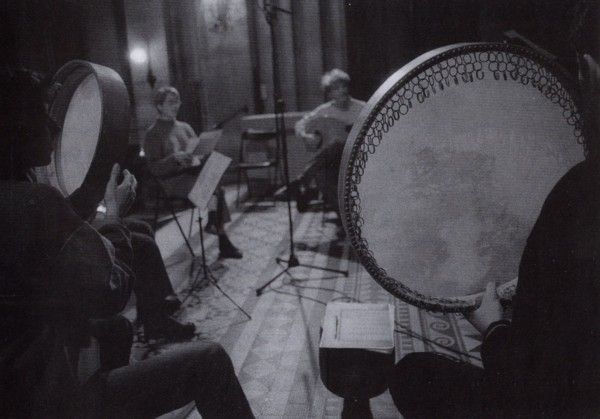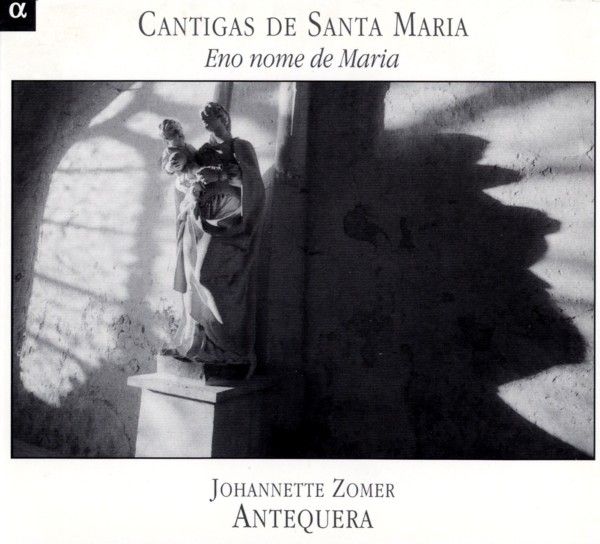
medieval.org
Les chants de la terre — Alpha 501
2003

medieval.org
Les chants de la terre — Alpha 501
2003
1. CSM 37. Miragres fremosos [6:25]
2. CSM 200. Santa Maria loei [5:13]
3. CSM 166. Como poden (instr.) [3:13]
4. CSM 329. Muito per e gran dereito [7:57]
5. CSM 412. Virgen Madre groriosa [6:17] [CSM 340]
6. CSM 1. Des oge mais [11:37]
7. CSM 260. Dized' ai trobadores [1:23]
8. CSM 15. Todolos santos (instr.) [3:32]
9. CSM 111. En todo tempo faz ben [4:24]
10. CSM 78. Non pode prender (instr.) [3:05]
11. CSM 70. Eno nome de Maria [6:47]
12. Prólogo. Por que trobar [7:34]
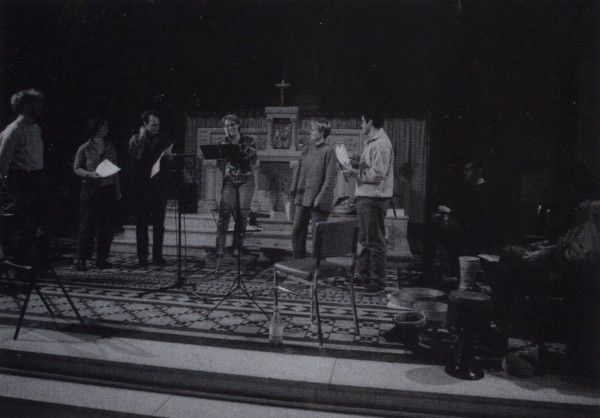
ANTEQUERA
Johannette ZOMER, chant
Sabine VAN DER HEYDEN, chant & synfonie
Carlos FERREIRA SANTOS, chant
Sarah WALDEN, vielle
Lucas VAN GENT, r'bab & flûte à bec
René GENIS, luth
Michèle CIAUDE, percussion
Robert SIWAK, percussion
Enregistré à Paris en décembre 2001 à Paris
Chapelle de l'hôpital Notre-Dame de Bon Secours
Enregistrement & montage numérique: Hugues Deschaux
Photographies de Robin Davies
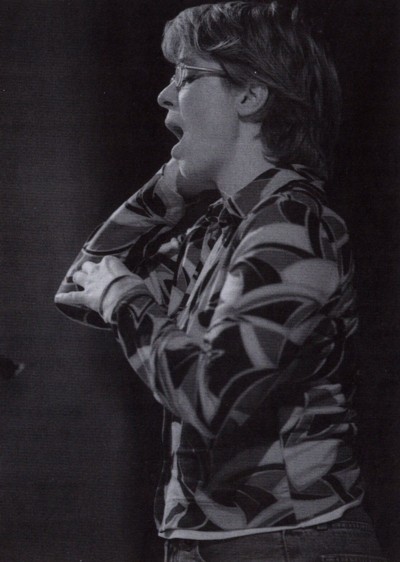
Antequera is a small town in the south of Spain 'whence the Moors came' as is mentioned in an old Spanish song. Ensemble Antequera has performed Cantigas de Santa Maria for over ten years. They have developed a performance practice based on improvisation. On the one band this is out of need, on the other it is out of choice. The cantigas have come down to us as single line melodies, without any information about how they were performed. Of course musicological research has provided us with a considerable amount of knowledge, but in fact there are no practical hints whatsoever. We know the perform ers of Alfonso's days had an enormous variety of instruments at their disposition. Many of these can be seen in the illuminations of the manuscripts of the cantigas themselves. Quite how people played, and what they played exactly, is not really known. We can be fairly sure, though, that improvisation played a large part in the performance of 13'" century instrumentalists. In this recording Ensemble Antequera have tried to replicate concert performance as nearly as possible; the improvisations are real and unedited. This may account for some imperfections which are an unavoidable part of improvising music. The spirit and essence of their peiformance has been captured masterfully.
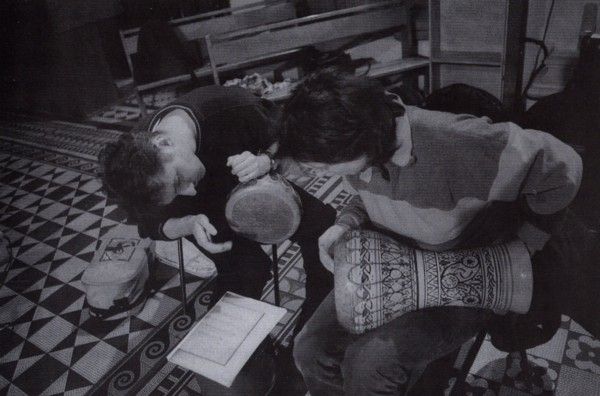
Alfonso ‘El Sabio’. Trobador dos Trobadores
‘And what I want is to sing the praise of
the Virgin, Mother of our Lord,
Holy Mary, who is the best
thing He has created; which is why
my greatest wish is to be her troubadour,
and beg her to accept me as her
Troubadour and to receive my verse,
in which I desire to show
the miracles she worked...’
The text of the ‘Prólogo’ to the over 400 Cantigas de Santa María, leaves no doubt as to the humble intentions of the trobador: the poet uses his craft and art to praise the Holy Virgin, ‘e o que quero é dizer loor da Virgen’, and to sing about the miracles She performed: ‘mostrar dos miragres que ela fez’.
According to the ‘Prólogo’ the ideal trobador
has to meet certain requirements: apart from understanding
(‘entendimento’) he needs reason (‘razon’) to express what he thinks
and, so the cantiga adds meaningfully, what he ‘intends to say’.
Choosing
a lady to sing in praise of follows the tradition of the troubadours.
However, King Alfonso X (1221-1284), the possible poet of the Cantigas,
addresses his praise to the Holy Mary instead of a worldly lady. In
addition Alfonso adheres to another courtly tradition of medieval
Europe. He tells of his Lady's miracles in order to comfort and soothe
the suffering and to give courage, as contemporary sources on the art of
the troubadour frequently prescribe.
Not only subject matter and attitude, but also the very melodies and poems of the Cantigas
themselves are sometimes directly linked to the original tradition of
the French and Provençal troubadours. The shift of troubadour art from
southern France to the Spanish, Italian and Sicilian courts must be
blamed in large part on the Albigensian Crusade against heretics in
1209. The surviving troubadours had a huge influence on vernacular song
in the countries where they found refuge. The troubadour inheritance
lingered on in Spain even after it had long disappeared in France
itself.
Alfonso X ‘El Sabio’ was crowned King of Castile and León
in 1252 and became one of the most significant leaders in Spanish
history. Up until then Spain had had a history of virtually permanent
war; the Catholic north aimed at ‘liberating’ the Moslem south ever
since it had been conquered by Tarik ibn Sajid[sic, Táriq ibn Ziyád]
in 711. The population of Spain was always a mixed one in which there
was an amalgam of cultural styles and influences. In the north
Christianity dominated but people surely were familiar with the cultures
of the Arab and Berber invaders as well as that of the Jews. The
stories of the cantigas often mention these peoples; some are dedicated
entirely to the mishaps they have to endure until they invoke the Holy
Virgin, who, we learn from a cantiga in Alfonso's collection, ‘helps
even those of different faith when they turn to her’.
Known for
his learning, Alfonso fostered interaction between Christian, Jewish,
and Islamic intellectuals, as well as accepting the above-mentioned
refugees. Alfonso's work touched nearly every area of human activity,
from science to political reform; he even ordered a book to be compiled
about the game of chess. Alfonso's role in the production of the Cantigas de Santa María
is not entirely known. He conceived and supervised the compilation and
it appears that at least some texts are his. They are typical of
cantigas in using the Galician-Portuguese language, which was the
language of Iberian medieval poetry. ‘Cantiga’ simply means a Spanish
medieval lyric, something which survives in quantity, in numerous
genres, distinguished by the type of narrative.
However, most cantigas survive as text only, making the collection of the Cantigas de Santa María
nearly unique for its music. Moreover, it is one of the largest
collections of medieval monophonic vernacular music. Whether Alfonso
wrote any of the music is unknown, but many of the songs in the
collection are certainly contrafacta. Some melodies have been identified as those of troubadour or trouvère
songs. That probably explains the fact that there is hardly a trace of
identifiable Arab or Jewish influence in the structure of the music. So,
even though the illustrations in Alfonso's manuscripts depict musicians
of all the cultural groups of Spain, it seems clear that the troubadour
style of music remained ‘intact’ to a great degree. It is very tempting
to presume that the musicians in the pictures might actually have taken
part in the execution of the music. In which case we might see Moors
and Jews performing Christian music... Of course, all of this is
speculation but there does seem to be a case for supposing that while
the subject matter of the texts and performance practice may have been
influenced by the various cultural elements in Spain, the actual
melodies and genre were more or less freshly borrowed from France and
Provence and remained rather more ‘European’.
Alfonso dubs himself ‘trobador’ and he clearly is in more
than one respect. In such cantigas as the Prólogo, nr 260 Dized' ai trobadores
and in the ‘loores’, we see him in his guise of master, telling us
listeners how to bring praise. In general terms his mastery can be
recognised in his marrying of Arabic Jewish and Christian influences
with the essentially Franco-Provençal art of ‘trobar’.
Of course
he and his entourage had to learn this craft, and sometimes adapted or
even copied the examples from the troubadours in a very direct manner.
The contrafactual setting of originally Provençal texts to new melodies
(no.70, Eno nome de María) or of existing melodies to new texts (no.340/412, Virgen, Madre groriosa) shows Alfonso's circle as pupils, willing to learn the art of their predecessors. The poetic structure of no.70 Eno nome de María can be likened to that of Dou tres douz non a la Virge Marie
by Thibaut de Champagne. In his chanson, Thibaut uses the individual
letters of the name ‘Marie’ as topic for each verse. In the cantiga
(with the same subject) a similar principle is adhered to, this time
within the even more stringent structure of an acrostic.
The melody of no.340/412 Virgen, Madre groriosa was taken from Cadenet's S'anc fuy belha ni presada.
Apart from that, there is a distinct textual relationship as well.
Cadenet's chanson belongs to the ‘alba’ genre in which the dawn (alba or alva)
is the final focus of every verse. Dawn sheds light on an amorous
situation, in a literal as well as a metaphorical sense. The cantiga
(one of the loores) praises Mary as the bringer of light: ‘Thou art the dawn of dawns’.
Alfonso's
cantigas survive in a number of beautifully illuminated manuscripts,
the compilation of which he himself had ordered. Each cantiga has a
number; there are more than 400 in all. Every cantiga also has a line of
introductory text, which at times can be very elaborate, but usually
merely states what the cantiga is about. The collection is arranged
according to type. There are two types of cantiga: the loores and the miragres.
Every tenth cantiga is a loor,
a cantiga in honour of Holy Mary. Usually these cantigas have no
narrative but simply tell us to honour Mary and why we should do so.
Virtually everything will do as a good excuse to bring honour to her:
her beauty, her righteousness, her kindness, her fortitude in battle
etc. Down to the letters of her name, which, as we are told in cantiga
no.70 Eno nome de Maria, represent words that describe her
marvellous qualities. Her perfection is illustrated by the fact that all
that she is, is expressed by the letters of her name, ‘of which there
are five, and no more’. No.200 Santa Maria loei is a somewhat
more personal statement, maybe even from Alfonso himself as it reads: ‘I
honour, and I will honour’. On the whole the narrator of no.200 gives
testimony about the help and support he has always felt from the Virgin
Mary. Cantiga 260 Dized' ai trobadores presents us with a whole
string of reasons why we should thank Mary. One of these is the simple
fact that it is thanks to her that we know how to ‘trobar’, how to sing
these songs. The last of the loores on this recording, no.340/412 Virgen, Madre groriosa likens the Virgin Mary to the dawn which sheds light on the erroneous ways of sinners and helps them to repent.
The miragres
on the other hand are story-telling songs. They contain a great deal of
narrative about the miracles that Mary performed, and are meant to show
how worthy Mary is of our praise. Among the stories found there are
many fantastic texts about wars, disease, plagues etc. For example
cantiga no.37 Miragres fremosos is about a man whose foot hurts
so much that he is advised to chop it off. He keeps praying to Mary and
during his sleep she comes to massage his foot, which eventually results
in the pain disappearing.
There are also tales of people who
were in despair for some reason or other. In these Mary is always shown
to be willing to help those who are in need and turn to her. She can
even revive people who are in fact dead, as we can learn from cantiga
111 En todo tempo faz ben in which a wanton, lewd monk drowns in
the river Seine but, after four days, is revived by Mary because he had
started to pray and say a psalm. Her powers seem quite limitless. In
similar fashion cantiga 329 Muito per e gran dereito tells us
about a sinful Moor who, after stealing treasure from a church, is
turned to stone but is brought back to life when his comrades return the
loot and repent.
When all is said and done, Alfonso champions
his lady as the ‘alva dos alvores’ (the ‘dawn of dawns’), the ‘sennor
das sennores’ (‘lady of all ladies’), the ‘rosa das rosas’ (‘rose of all
roses’) and the ‘fror das frores’ (‘flower of all flowers’); who better
to call the ‘trobador dos trobadores’?
Anthony Fiumara & René Genis
